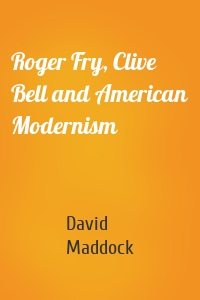David Maddock
2 кн.
Roger Fry, Clive Bell and American...
When the Bloomsbury critics Roger Fry and Clive Bell introduced an aesthetically conservative English public to recent Parisian avant-garde painting, they explained its disconcerting imagery by way of a late nineteenth-century metaphysical tradition which had long intrigued musicians and Symbolist writers on the European continent. The Post-Impressionist aesthetic they devised advocated a direct response to the formal ingenuity of the work of art without recourse to prior knowledge and...
| Автор | David Maddock |



